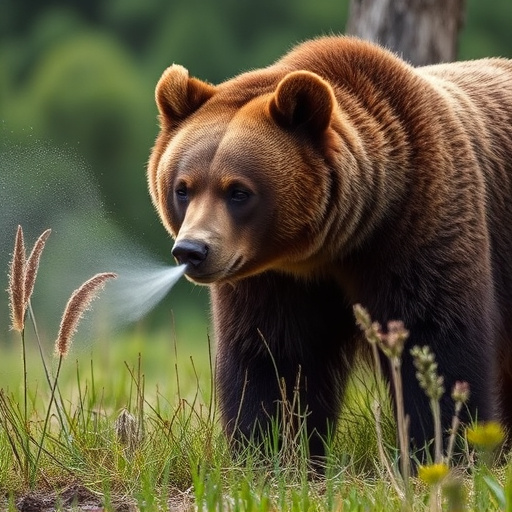Bear spray foggers, emitting capsicum oil mist at close range (20-30 ft), show success rates from 75% to nearly 100% against bear attacks when used correctly, per "How Effective Is Bear Spray" research. While not foolproof, it's a highly effective defense compared to noise makers, flares, and barriers in bear country like Alaska.
In Alaska’s vast wilderness, bear encounters can be a reality for outdoor enthusiasts. Understanding bear spray foggers and their effectiveness is crucial for navigating these potential risks. This article delves into the mechanics of bear spray fogger defense, comparing its efficacy with other deterrents. We examine how bear spray performs in various research studies, offering insights into its reliability as a protective measure against aggressive bears. By exploring these factors, we aim to provide a comprehensive guide for adventurers seeking safe exploration in Alaska’s natural landscape.
- Understanding Bear Spray Fogger Mechanics
- Alaska Bear Encounters: Reality vs Research
- Efficacy Comparisons: Bear Spray vs Other Defenses
Understanding Bear Spray Fogger Mechanics
Bear spray foggers are designed to provide a non-lethal defense against bear attacks by delivering a powerful stream of pepper spray into the animal’s eyes and respiratory system. Understanding how these devices work is crucial when considering their effectiveness as a safety measure in bear country. Research shows that bear spray can be highly effective when used correctly, with success rates ranging from 75% to nearly 100%. The key mechanics involve a fine mist of capsicum oil, the active ingredient in pepper spray, which irritates the bear’s eyes and sinuses, temporarily disorienting and deterring it.
The fogger’s design includes a canister containing the spray, a trigger mechanism, and a nozzle that creates a wide or focused spray pattern depending on the model. When activated, the pressure from the canister propels the pepper spray in a stream or mist, ensuring it reaches distant targets. It’s important to note that bear spray is most effective when used at close range, generally up to 20-30 feet (6-9 meters), as bears can develop a tolerance to the spray over time if exposed to longer ranges. Effective usage also involves aiming for the face and eyes of the bear, as these areas are more sensitive to the irritant.
Alaska Bear Encounters: Reality vs Research
In Alaska, bear encounters are a reality for many outdoor enthusiasts and residents alike. While research plays a crucial role in understanding the effectiveness of bear spray as a defense mechanism, it’s essential to separate fact from fiction. Studies show that bear spray can be highly effective when used correctly, creating a barrier of protection by irritating a bear’s eyes, nose, and respiratory system. However, the success rate varies based on factors like bear species, distance, weather conditions, and individual sprayer proficiency.
Contrary to some popular beliefs, no single method guarantees complete protection against bears. Research suggests that using bear spray strategically is one of the best defenses available, but it’s not foolproof. Understanding how effective bear spray truly is involves considering both scientific findings and real-world encounters, as navigating Alaska’s wilderness requires a multifaceted approach to bear safety.
Efficacy Comparisons: Bear Spray vs Other Defenses
Bear spray has long been considered a standard defense against bear encounters, but how does it stack up against other methods? Research indicates that when used correctly, bear spray is highly effective in deterring and disabling bears. Studies have shown that bear spray can be up to 97% successful in preventing attacks, making it one of the most reliable personal defense options available.
Comparatively, other defenses like noise makers, flares, or even physical barriers have varying levels of success. Noise makers can startle bears but often don’t provide enough time for a safe escape. Flares and barriers may be effective in specific situations but are not as versatile or universally applicable as bear spray. The versatility and ease of use of bear spray make it a top choice for outdoor enthusiasts navigating bear country, ensuring they’re prepared for unexpected encounters with these powerful animals.
In light of the above discussions on bear spray fogger defense, it’s clear that while bear spray has been touted as an effective deterrent in many research studies, real-world encounters paint a more nuanced picture. Understanding the mechanics of bear spray and comparing its efficacy with other defenses is crucial for visitors and residents of Alaska. Remember that no single method guarantees 100% protection against bear attacks, but combining strategies—such as making noise, carrying bear deterrents, and knowing how to react—can significantly enhance your safety in bear country. When it comes to how effective bear spray research truly is, the evidence suggests that proper usage can lead to positive outcomes, but staying informed and prepared for unpredictable encounters is key to navigating Alaska’s wild landscapes safely.
